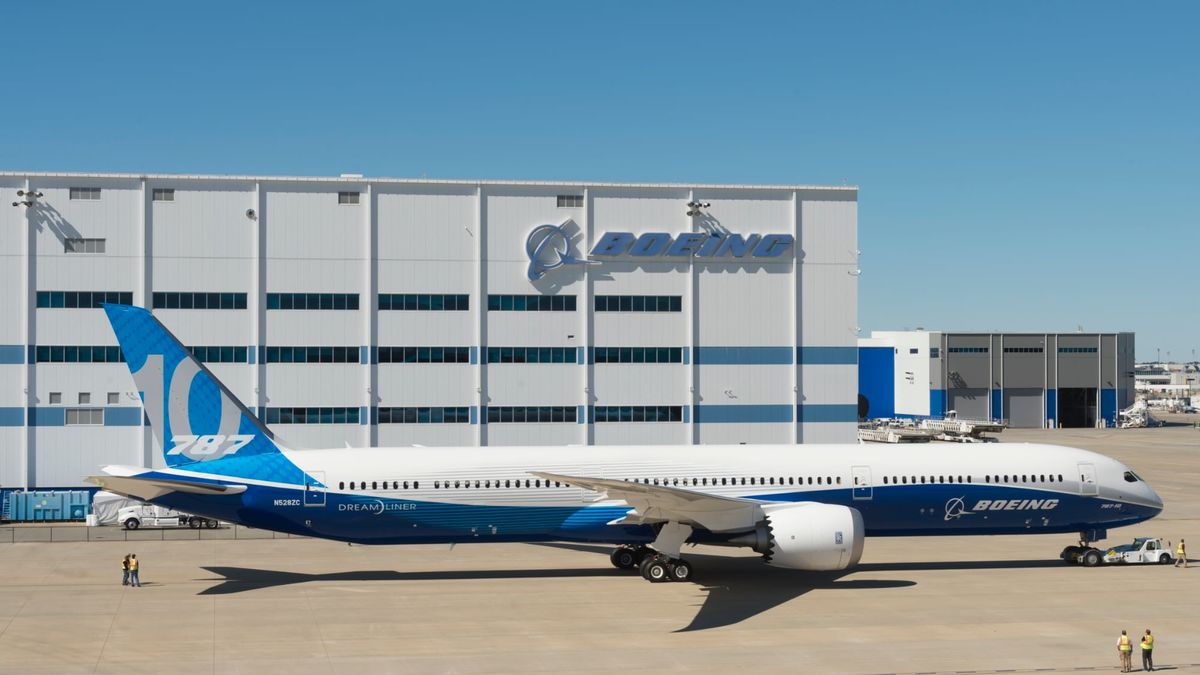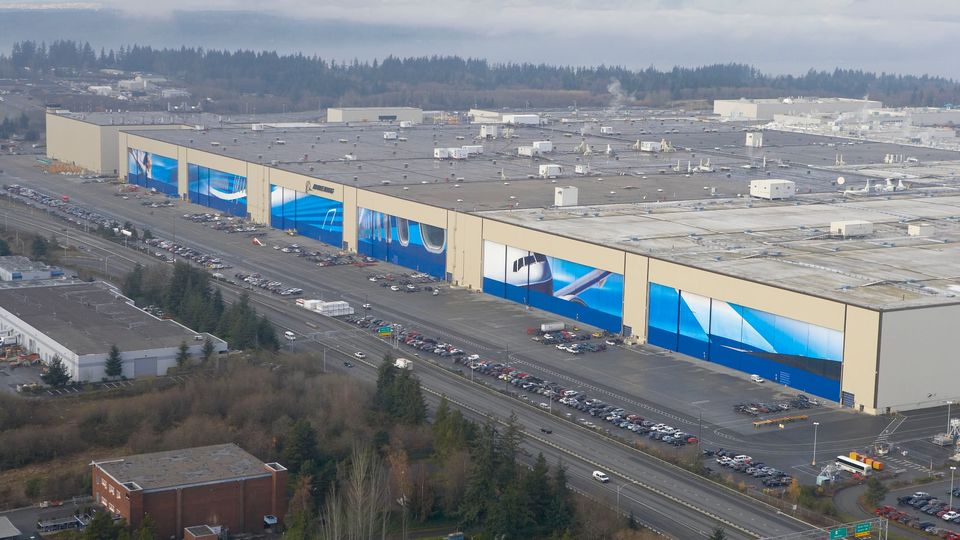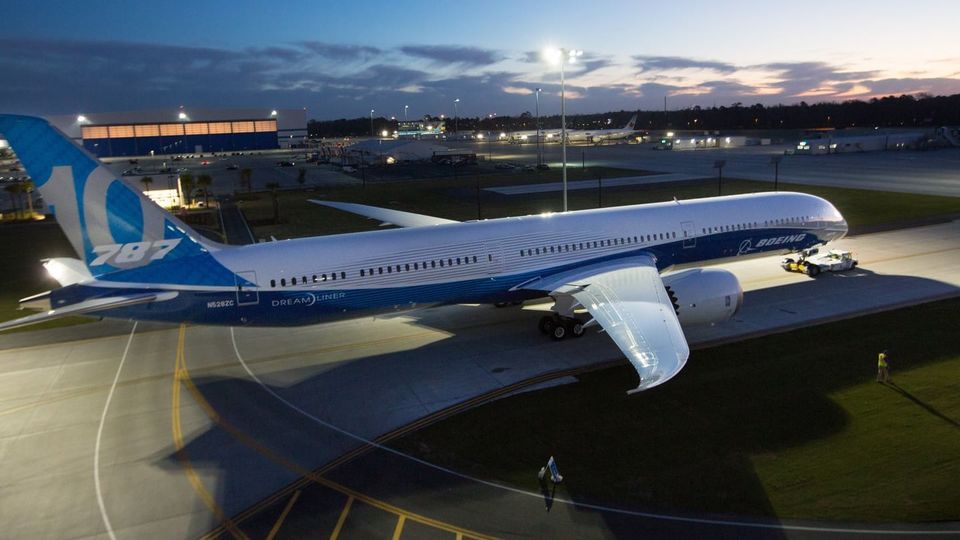Boeing 787 production ends at Seattle, shifts to South Carolina
By the middle of 2021, all Boeing 787s will be made only at the company's North Charleston facility.

Boeing is uprooting the 787 Dreamliner program from a storied manufacturing hub north of Seattle and shifting the work to a non-union plant in South Carolina amid slumping sales of wide-body jetliners.
Production of the marquee twin-aisle jetliner will be consolidated in North Charleston in mid-2021 by the company’s best estimate, Boeing said in a statement Thursday.
The planemaker didn’t disclose how many jobs it intended to cut, saying it is still assessing the potential impact on its factory complex in Everett, Washington, where it employs about 30,000 people.
The move bolsters Boeing’s decade-long expansion in South Carolina, which hosts the company’s only final jetliner assembly line outside its century-old base in Washington state.
As the company braces for years of weak orders, the consolidation also raises doubts about the future of Boeing’s mammoth wide-body factory in Everett, a plant that was carved out of marsh and forest in the 1960s to house production of the 747 jumbo jet.

The shift to South Carolina had been widely expected, given Boeing’s investment in a brand-new campus, after executives revealed in July that they were studying consolidation of Dreamliner production in a single site.
Boeing CEO Dave Calhoun and CFO Greg Smith said in July that the company was reviewing its operations, overhead and facilities and focusing spending on critical areas as it faces a market that’s likely to remain depressed for years.
Drop in demand
Boeing is restarting its 787 operations at the plant for the first time since April 8, including all operations that were suspended because of the Covid-19 pandemic, ABC News reported.
“It became clear that consolidating to a single 787 production location in South Carolina will make us more competitive and efficient, better positioning Boeing to weather these challenging times and win new business,” Stan Deal, head of Boeing’s commercial airplane division, said in a message to employees.
In making the decision, Boeing weighed logistics, efficiency and the “long-term health of our production system,” among other considerations, Deal said.
The coronavirus pandemic has devastated the company’s sales outlook by sapping demand for flights, especially on the international routes plied by wide-body jets such as the Dreamliner.
The shift to South Carolina had been widely expected, given Boeing’s investment in a brand-new campus, after executives revealed in July that they were studying consolidation of Dreamliner production in a single site.
“We have made long-term strategic and sometimes difficult decisions to ensure we bridge to a recovery, and build a stronger, more sustainable future for all of us,” Deal said.
Controversial plant
Boeing’s 787-only factory in North Charleston has been controversial since inception more than a decade ago, when senior leaders including then-Chief Executive Officer Jim McNerney were chafing at a lengthy Machinists union strike that hobbled manufacturing around Seattle.
Quality issues at the plant drew the attention of U.S. regulators, and came to the fore again in recent weeks as Boeing was forced to ground eight Dreamliners because of potentially dangerous structural weakness.
About 1,000 mechanics and electricians assemble Dreamliners in Everett. Boeing also employs manufacturing and industrial engineers who provide daily support on the factory floor, and design engineers who configure airplanes to each customer’s specifications.
Boeing said it will keep building 787s in Washington until it lowers output to a six-airplane monthly rate sometime next year. But by spreading Everett’s costs over a smaller production base by mid-2021, the company risks creating a financial drag that lowers the profits of the remaining wide-body programs and its mainstay commercial business.
Costly overhead
Longer term, Boeing could look to put its next new jetliner into Everett, whether that’s a narrow-body or mid-sized wide-body, said Robert Spingarn, an analyst at Credit Suisse Group.
He said the 787 is unlikely to return to its original home in Everett, even though the North Charleston facility only has the capacity to manufacture seven jets a month – half of Boeing’s total Dreamliner output at the start of the year.
If demand for wide-body jets ever rebounds enough to near pre-pandemic levels, the company would probably build a second assembly line in South Carolina, Spingarn said.
“I don’t think this relocation is an optimal outcome. This is not something they would’ve done otherwise,” Spingarn said. “This is reactive. It’s necessary. They fortunately have the benefit of multiple locations to do this, but they’re looking at excess capacity.”
This article is published under license from Bloomberg Media: the original article can be viewed here

11 Jul 2020
Total posts 75
Bad move Boeing considering the build quality concerns of the South Carolina built 787 Dreamliners. But I guess the is the new world agenda to pay workers a pittance in non unionised workforces while profits soar. Most people in any workplace fail to realise the wages they enjoy where achieved by all those who went before them trying to make sure we can survive financially and in work in a safe workplace. We had heading towards a two class society worldwide the rich and the poor if people dont wakeup and take notice before it's too late, there will be no middle class.
03 Oct 2020
Total posts 4
Spoken like a true union wonk or socialist. OMG, the quality problems in Boeing Washington state are legendary. They left a friggin ladder in the sealed wing of a 787 and tools sealed in about every KC-47 much lass all the wiring problems (we wont even start on all the recent 737 quality problems) . They cant do any worse In Charleston than the Union workforce. You can moan all you want but the KC-47 is delayed for years due to quality problems.
03 Oct 2020
Total posts 4
Meant KC-46
11 Jul 2020
Total posts 75
The writing is on the wall Lewandow. Automation and the advancement of A.I. will see the demise of jobs over most industries in the next 5 to 10 years and eventually the demise of the human race as the human race become superfluous as A.I. runs everything in the world into the future and has no need for humans.
The rich might think they have this covered by leaving earth and living on the moon or another planet for example but A.I. will follow them there and out in space nobody can hear you scream as you draw your last breath.
The middle class is going to be a thing of the past, there will just be the rich and the poor, a two-class society. Disbanding unions in the workplace are the first step, next step was moving permanent job positions from fulltime to casual or on a contract, so once your contract is up, you need to reapply, usually with worse pay and working conditions. Third, is flooding the marketplace with extra people from overseas to drive down the hourly pay rate and with more people competing for the same jobs, this will be achieved.
People will be so desperate for work (Which I totally understand and want to come here for a better life either on a working visa or through migration) they will accept less pay to have some money coming into their household and a job and Unemployed Australians who live here already will suffer. There needs to be a balance. But it all comes back to the grand long term plan by the rich and their enablers to make the world a two-class society. Hopefully, I might only see the start of this before, I draw my last breath and depart this earth.
I'm retired from work, I took redundancy in my Union-backed job and left there a lot better than some of my work colleagues who got made redundant as well, who like you, Lewandow, scoffed at being a union member. I left with 4.5 times my yearly salary, they only got one year's salary. If they were union members, they would have got the same deal as me.
The cost of living is going up here in this country, yet wages in most industries and workplaces have remained stagnant for at least the past 5-6 years and things are only going to get worse, not better worldwide with all that I have written above slowly becomes a reality.
Hi Guest, join in the discussion on Boeing 787 production ends at Seattle, shifts to South Carolina